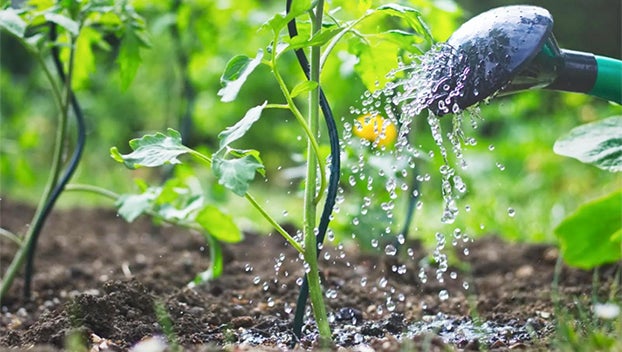MASTER GARDENER — Garden preparation is important as seasons change
Published 12:14 am Wednesday, October 4, 2023
|
Getting your Trinity Audio player ready...
|
Wow, I know it is difficult to fathom but fall seems to have “physically” arrived SETX.
I’m thrilled as this past week has heralded daytime highs in the mid-80’s, clear indications of seasonal changes heading in our direction … soon. It’s time to spend some quality time outdoors performing necessary gardening tasks while enjoying the moderate temperatures.
There are a multitude of things to do which most of us (me included) placed on hold because it was simply hot to be outside. Let’s review fall cleanup and winter garden tasks we need to perform to prepare our gardens for the colder months.
The “To Do” list below details necessary tasks for fall garden and landscape cleanup, with a secondary list of garden tasks “To Avoid.”
Perform the following tasks.
Collect Seeds — Select seeds from mature seed heads, ensure they are thoroughly dried for replanting next year. Leave some seed heads for birds, especially on annuals and perennials. Birds enjoy feasting on sunflowers and coneflowers.
Trim Perennials — once flowers, foliage, and stems have withered, cutback perennials, leaving about 3-inch stems. Permanent labels are extremely helpful to mark a plant’s location for when spring returns.
Ornamental Grasses — many of us enjoy the regal beauty they provide during the winter months, and they don’t require trimming. Some gardeners prefer a neater aesthetic, choosing to cut plants back 3-4″ in fall.
Soil Amendments — add a 2-inch layer of compost beneath perennials, trees, and shrubs. This will provide a slow release of nutrients during the cool seasons. It will also “jumpstart” the spring growing season as the plant’s roots will have stored energy immediately available.
Mulch, Mulch, Mulch — stated multiple times, mulch is a gardener’s best friend. Adding a mulch layer over the soil helps prevent frost forming around plants. Be generous when applying mulch by placing a 3 to 4-inch layer around the base of plants and shrubs but not allowing mulch to touch a trees’ trunk. Don’t mulch too early, or too deeply since mulch insulates the soil, and in Fall that isn’t necessarily a good thing. Cool soil allows plants to enter dormancy, which is their resting state.
Water Frequency — all plants need water during cooler months. If we receive ample rainfall supplemental watering can be lessened. The soil around woody plants must be kept moist but not saturated. This is especially important for evergreens since they continue to take up water throughout the winter. It is a good idea to drain irrigation systems, garden hoses, and most other watering equipment just before freezing weather occurs.
Clean Planters — since moist soil will expand as it freezes, this will often destroy ceramic, terra cotta, and plastic containers. It’s best to remove soil from planters, thoroughly clean them using a dilute bleach & water solution, before storing them covered.
Leaf Litter — lucky you! Leaves are a gardener’s gift, containing an abundance of nutrients made readily available to plants as they decompose into mulch and compost. Utilize lawn-mowing equipment to aid in breaking leaves down into small pieces, which allows them to decompose quickly.
They can be corralled by racking into piles, then adding to a compost pile to decompose over time. Remember a multitude of beneficial insects and pollinators overwinter in fallen leaves, debris and brush piles, and unkempt areas. Keeping a portion of the landscape “wild” will provide an important habitat.
Avoid the following tasks.
Late Planting — adding late additions to the landscape could result in plant losses. Perennials are susceptible to late planting. Remember, freezing and thawing of soil will force plant roots out of the soil. For the best results & increased survival rates, plantings need to be in place 8 weeks before a freeze.
Pruning Shrubs — causes plants to produce new growth, making them vulnerable to frigid temperatures. Spring pruning is always best once the danger of frost has passed. I don’t recommend pruning shrubs past August with one exception, diseased (dying limbs) need to be eliminated to remove hiding placing for pests and pathogens.
Vegetable Varieties — vegetable selections (seeds & transplants) should be cold-tolerant varieties which can provide a long harvest period over the colder winter months. Gardeners, please note the importance of destroying withered vegetable crops, especially if the plants hosted diseases and pests. Tomato and pepper varieties are notorious for hosting a litany of pests and diseases.
Do not simply toss these plants into your compost pile. More than likely a compost pile will not generate the necessary heat required to kill pathogens, nor destroy pests and eggs. It’s safer to dispose of infested plants by placing them into a trash bag. Place trash bags on the curb for garbage pickup, or an alternative is to incinerate them.
Frost Covers — gardeners, there is no ‘good’ excuse for not having frost covers. Covers are required when frosty weather appears. The kits (including hoops & covers) are inexpensive, less than $30 for approximately a 20-foot section. Frost covers extend the growing season, and certainly come in handy for us SETX.
Infrequent Watering — transplanted trees (fall planting) require water. They also need consistent watering during the winter months and throughout the first year of planting, until the tree roots are well established.
Fall Fertilizing — late season feeding will disrupt the plants hardening-off process, mitigating dormancy, the ‘slowing down’ process all plants need (plants version of deep-sleep cycles) . Slow-release fertilizers and compost are the only exceptions, since unlike quick-release synthetic fertilizers, they don’t cause a flush of new growth.
Herbicide Use — stop wasting your money by spraying herbicides during the colder months. Spray while plants are actively growing (temps in the 60’s or above). Once the temperature drops into the 50’s most weed killers simply will not perform. Please read the label, it will provide necessary safe handling and dosing details.
Lawn Height — mow the lawn a final time before a frost arrives. If possible, do not walk on a frozen lawn. Frozen grass is prone to breaking, which can damage individual grass crowns.
Plant Vulnerability — know your plants vulnerability to cold weather, have the resources available to quickly wrap them with a “winter coat” using a breathable fabric, such as burlap for protection against the cold. Plants with ‘borderline’ hardiness are at risk, and evergreens known to “winter” burn. Be prepared, have wrapping material, rope, string, or wire on-hand to secure the material.
One of the most enjoyable aspects of gardening is the constant change. Enjoy the journey. So long for now fellow gardeners, let’s go out and grow ourselves a greener, more sustainable world, one plant at a time! Please continue sending your comments and questions to me: jongreene57gmail.com
Send comments and questions to Texas Certified Master Gardener John Green at jongreene57gmail.com.






